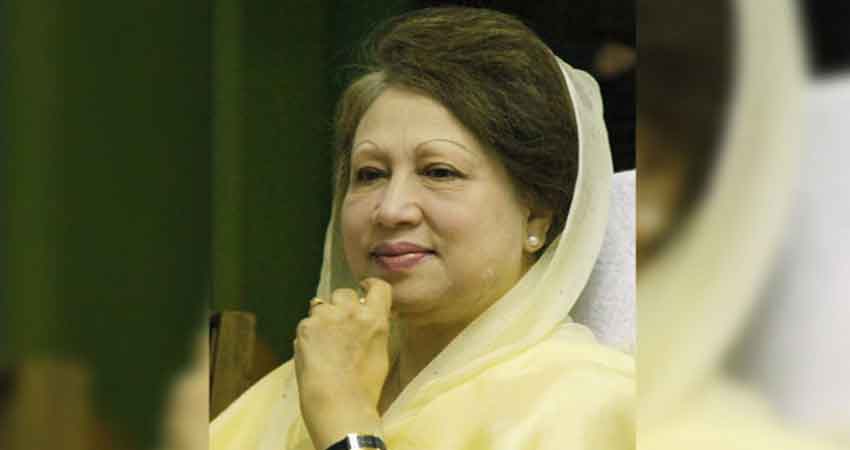The High Court (HC) has directed the authorities concerned to form a commission to identify and probe the "conspirators" who sought to undermine the Padma Bridge project by raising false allegations of corruption over its construction.
The bench of Justice Md Nazrul Islam Talukder and Justice Kazi Md Ejarul Haque passed the order following a hearing on a rule over the matter on Tuesday.
Confirming the matter to The Business Standard, Deputy Attorney General AKM Amin Uddin Manik said, "The HC has given 30 days to the concerned government bodies to form the inquiry commission.
"After formation, it will have 60 days to submit its findings to the court."
Earlier on Monday, the HC raised the question that if there was no conspiracy then why would the World Bank (WB) suspend funding for the construction of Padma Bridge.
The court also remarked that those who conspired are anti-state and they have to be tracked down.
The same bench made the observations during a hearing of the rule asking the government why an inquiry commission should not be formed to detect the conspirers.
The bench said, "Padma Bridge is our national asset. It is our pride. Those who are against the development of such national interests are enemies of the nation, enemies of the country. They need to be identified."
The court then fixed today (28 June) for the next hearing in this regard.
The dream bridge, built with the country's own finds, was inaugurated by Prime Minister Sheikh Hasina on Saturday and was opened to traffic a day later.
On 15 February 2017, the HC issued a rule asking the cabinet, law, home, and communication secretaries, the chairman of the Anti-Corruption Commission (ACC), and the inspector general of police to reply in two weeks as to why a commission of inquiry should not be formed.
The suo moto rule – issued by an HC bench comprising Justice Quazi Reza-Ul Hoque and Justice Mohammad Ullah – came as several national dailies then published reports on the plotters.
On June 29, 2012, the WB posted a long statement on its website mentioning that it decided to cancel its $1.2 billion IDA credit in support of the Padma Multipurpose Bridge project, effective immediately.
The global lender claimed that it had "credible evidence" corroborated by a variety of sources which points to a high-level corruption conspiracy among Bangladeshi government officials, SNC Lavalin executives, and private individuals in connection with the Padma Multipurpose Bridge Project.
The WB provided information from two investigations to Sheikh Hasina, as well as the finance minister and the chairman of the Anti Corruption Commission of Bangladesh (ACC) in September 2011 and April 2012.
On 17 December of the year, ACC filed a graft conspiracy case with Banani Police Station in Dhaka against Mosharraf Hossain Bhuiyan, the then Bridges Division secretary; Kazi Mohammad Ferdous, the then superintendent engineer of Bangladesh Bridge Authority, and Reaz Ahmed Zaber, the then executive engineer of the Roads and Highways Department.
The accused also included former local agent of SNC-Lavalin Mohammad Mostofa and its ex-officials Mohammad Ismail, Ramesh Shah and Kevin Wales.
The graft watchdog body in its probe report submitted to the court in September 2014 cleared all the accused in the case of the conspiracy charges, saying none had been found guilty. The ACC did not find any proof that connects former Communication Minister Syed Abul Hossain.
On 9 July, 2012, PM Hasina at a cabinet meeting announced that Bangladesh would construct the Padma Bridge with its own funds after the World Bank withdrew from the project on allegation of unproved corruption conspiracy.
Later, the graft allegation was rejected by a Canadian Court as false and baseless after the WB filed a case in this regard.
Mosharraf Bhuiyan, now Bangladesh's ambassador to Germany, spent over 40 days in jail but he later was found innocent.
The Awami League government had taken the initiative to build the Padma Bridge in 1998 and Prime Minister Sheikh Hasina laid the foundation stone of the Padma Bridge on 4 July, 2001. She inaugurated the construction of the main bridge on 12 December, 2015.
Bangladesh signed an agreement to build the Padma Bridge with a Chinese firm - China Major Bridge Engineering Company on 17 June, 2014.
The first span of the Padma Bridge was installed on September 30 in 2017 while the last span (41st) span was installed at 12:02pm on 10 December, 2020.
Though the length of the main bridge is 6.15km an additional four kilometres have already been built on both sides which are described as viaducts. The two-storey bridge is 22 metres wide and has four lanes.
In May, 2016 Ecnec approved the Padma Bridge Rail Link Project.
On 14 October, 2018, the prime minister unveiled the plaque of Padma Bridge at Mawa end and opened work on the rail link project.
Five senior engineers involved in the much-talked-about Bridge categorically said that the cost of its construction has been the lowest in the world in the context of the challenging realities.
A delegation led by Project Manager and Supervision Consultant of the Padma Bridge Robert John Aves apprised the prime minister of the technical issues of the project and said the bridge will last more than 100 years.
The government expects that Padma Bridge's construction cost will be recovered in the next 35 years, according to the Bangladesh Bridge Authority (BBA).
The finance ministry provided BBA an amount of Tk30,000 crore as credit, which will be repaid with a 1% interest rate in 35 years.



















